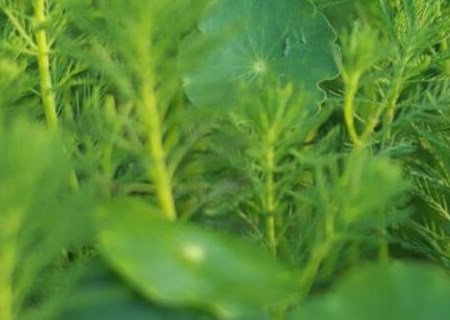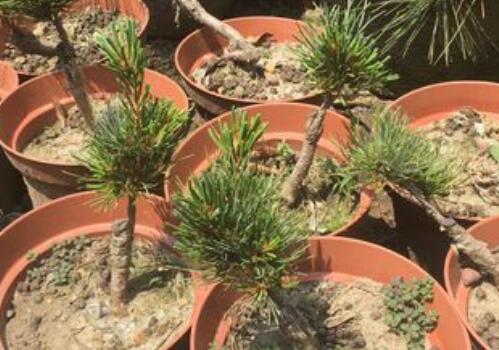Can pear trees make bonsai? How to make it? Can I keep it indoors? Fruit thinning technique of aconite pear tree
Pear is a perennial deciduous fruit tree of the genus Pyrus of Rosaceae, which is widely distributed all over the world. The cultivated area and yield of pears in China are second only to apples. Can the pear tree make bonsai? How to make it? Can I keep it indoors? What are the fruit thinning techniques of pear trees? According to Mr. Lu, a master of bonsai farming, pear potted plants can be placed in a bright and ventilated place on the balcony. Pear trees are light-loving and drought-tolerant plants, and extensive management is fine. Topdressing phosphorus and potassium fertilizer is better, which can promote plant flowering and fruiting.

How to make pear bonsai?
1. Material selection
For pear propagation, Qiuzi pear, Shanli pear, du pear and pear pear can be selected as rootstocks. Pear varieties with strong growth, good quality and easy to hang fruit are used as scions and grafted by bud grafting or branch grafting. The rootstock can not only be propagated artificially, but also use the old pear trees eliminated in the orchard or dig up the old stakes of pear varieties such as short plants, peculiar shapes, early branches and simple and vigorous mountain pears, which can be rejuvenated by "raising billets" to make them grow new branches and then graft. Generally, dig and transplant after falling leaves in autumn or before sprouting in spring, first plant in the ground or in a larger earthen basin, reshape the plant before planting, cut off the overlong main root, retain the lateral root and whisker root, and cut off the redundant branches. After planting, pour water thoroughly and keep it in a place away from the wind and the sun to ensure survival.
2. Modeling
Pear trees are suitable for making many different forms of bonsai, such as direct dry type, oblique dry type, curved dry type, double dry type, jungle type, facing water type, horizontal dry type and so on. Because of the large leaves, the crown is mostly in natural shape, so it is not necessary to tie it into a sheet. Due to the strong growth of pear trees, large annual growth and vigorous development of top branches, no matter what form of bonsai should be used to control the growth of strong branches to form a short, compact, natural and beautiful crown, and promote the transformation from vegetative growth to reproductive growth, which is conducive to the formation of flower buds. The pear tree has a large fruit, which is the main viewing point of bonsai. When cultivating the crown, the size, number and distribution of the fruit should be determined according to the plant shape and nutrition reserve. And through the methods of drawing, twisting, bending and truncation, adjust the branch direction, increase the number of backbone branches, control strong branches, promote the growth of short branches, in order to cultivate robust fruiting branches, make bonsai branches and leaves plump, the results are appropriate. The root system of pear tree is well developed, which can be raised according to the need to increase the artistic conception of the vicissitudes of bonsai.
3. Maintenance
The main results are as follows: (1) the pear tree likes the warm, humid and sunny environment, and has strong adaptability to the environment, cold and high temperature. During the growing period, it can be maintained in a place with good ventilation and plenty of sunny. if the light is not enough, the branches will not grow fully and the flower buds will not be full. Winter can be placed in the cold indoor or outdoor shelter to the sun to winter, keep the basin soil free of ice to survive the winter safely.
(2) the pear tree needs a large amount of fertilizer, so it is necessary to apply sufficient basic fertilizer when potting, and to apply mature organic liquid fertilizer every 15 to 20 days in the growing season. In the period of germination, flower bud differentiation and fruit expansion, in addition to normal fertilization, the use of phosphorus and potassium fertilizer should also be increased by spraying 0.2%-0.3% potassium dihydrogen phosphate solution to the leaves for 3 times. to meet the nutrition needs of flowering and fruiting.
Attached: fruit thinning technology of pear trees
Fruit thinning is an important technical link in the process of pear production. Whether the amount of fruit retained is reasonable and whether the fruit thinning technology is in place will directly affect the yield and quality of pear and the economic benefits of pear production. Leaving too many fruits causes many small fruits, uneven fruit size, poor fruit quality, weak tree potential and other phenomena, but also affects the yield of the second year; too few fruits affect the yield of the same year. In order to realize the sustainable development of pear production, we must master the fruit thinning technology and keep the fruit reasonably.
The main results are as follows: 1. The fruit thinning time of pear trees: 10 days after pear Xiehua, Jianchuan is suitable for "Qingming Festival".
2. Fruit thinning method: fruit platform branches should master the principle of one fruit per set, leaving only one fruit on one platform, and the spacing between fruit thinning consequences should be kept at about 20 cm. Fruit thinning of annual branches should be based on the thickness of branches to determine the amount of fruit retained, generally controlled in 1-2 fruits so that the branches do not droop.
When thinning fruit, we should pay attention to the choice of good fruit, cut off diseases and insect pests, abnormal fruit, an inflorescence fruit should try to keep the best fruit from the bottom to the second to fourth place, and remove the excess fruit.
3. The amount of fruit retained: in order to ensure the quality of pear fruit, the yield of adult pear orchard is generally controlled within 3000 jin per mu, and the amount of fruit retained per mu is about 6000 according to the yield of 3000 jin per mu and 30 pear trees per mu.
Time: 2019-03-18 Click:
- Prev

What are the hydroponic culture methods of Rabdosia angustifolia? What happens after flowering? What is the meaning of fengshui?
Tongqian grass leaves round, very similar to the ancient copper money, very lovely, many people like to plant it, the cultivation methods are hydroponic and soil culture. So do you know what are the hydroponic culture methods of Rabdosia angustifolia? What happens after flowering? What is the meaning of fengshui? What are the hydroponic culture methods of Rabdosia angustifolia
- Next

How much is the price of Osaka pine in Japan? How to maintain it? How to make and trim bonsai? What if the leaves turn yellow?
Osaka pine is also known as gold leaf five-needle pine, one of the cultivated varieties of Japanese five-needle pine, is a more valuable kind of five-needle pine, generally used as bonsai material selection, planting is relatively rare. How much is a Japanese Osaka pine? How to maintain it? How to make and trim bonsai? What if the leaves turn yellow?
Related
- Fuxing push coffee new agricultural production and marketing class: lack of small-scale processing plants
- Jujube rice field leisure farm deep ploughing Yilan for five years to create a space for organic food and play
- Nongyu Farm-A trial of organic papaya for brave women with advanced technology
- Four points for attention in the prevention and control of diseases and insect pests of edible fungi
- How to add nutrient solution to Edible Fungi
- Is there any good way to control edible fungus mites?
- Open Inoculation Technology of Edible Fungi
- Is there any clever way to use fertilizer for edible fungus in winter?
- What agents are used to kill the pathogens of edible fungi in the mushroom shed?
- Rapid drying of Edible Fungi

